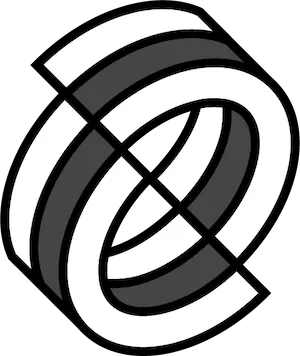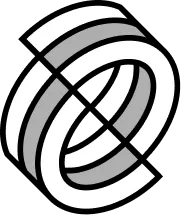The Open Network (TON) is a layer 1 blockchain designed for speed and scalability.
TON traces its origins back to Gram, a blockchain project originally conceived of by the Durov brothers, founders of messaging app Telegram. Gram was created with a view to integrating cryptocurrency into Telegram’s ecosystem.
After the SEC sued Telegram over Gram’s ICO, the firm abandoned the project. An open-source, decentralized community of developers subsequently picked up the baton, developing TON as a separate, independent project using the technology originally designed by Telegram. And now Telegram is increasingly embracing TON as it once more amplifies its crypto efforts.
What is TON?
The Open Network is a blockchain platform designed for scalability and interoperability, based around a “blockchain of blockchains.” Its architecture incorporates a masterchain, which manages the network and determines the state of all chains in the system, alongside customizable workchains, which perform tasks such as processing transactions.
TON uses a sharded, proof-of-stake consensus mechanism, meaning it can process transactions in parallel, improving transaction speed. The TON Foundation claims the network can process millions of transactions.
Toncoin is the native cryptocurrency of the TON network. It is used for network operations, transactions, games or collectibles built on TON.
TON also features a Telegram-based wallet, called Wallet Bot, that provides commission-free crypto transfers to any other Telegram user, and is the primary way users interact with Telegram Mini apps, Telegram’s JavaScript based interface ecosystem that allows businesses to create in-app experiences. This Wallet Bot was not created by Telegram itself.
There are also other services on TON, including TON Storage, TON Proxy (a decentralized VPN service), and the TON naming system. Toncoin is the primary way these services are paid for by users. It has its own app store, with several hundred apps deployed at the time of writing, that also use the currency.
Tokenomics
Per CoinGecko, Toncoin has a total supply of 5 billion TON, and at the time of writing, 2.5 billion TON are in circulation. Validators receive rewards in TON for maintaining the network, and the Foundation has created an inbuilt annual inflation rate of 0.6%.
While Toncoin is the currency for Telegram’s services, as further detailed below, Toncoin is also used to influence how the network develops in the future. The Open Network is a decentralized autonomous organization (DAO), so users who hold the blockchain’s native token can cast votes on any proposed changes to the blockchain or ecosystem.
The history of TON
In 2018, the messaging platform Telegram released a white paper for a layer-1 blockchain it called the Telegram Open Network.
The project’s currency, called ‘Gram’, was designed to pay transaction fees, settle payments and validate transactions on the network.
The launch hit the headlines. It broke records in 2018 after raising an eye-watering $1.7 billion in a token sale. It was the second largest ICO in history, behind EOS, which raised $4 billion. But two years later, Telegram abandoned the project.
The Durov brothers and Telegram’s engineering team had brought the project to the verge of completion, but then the U.S. Securities and Exchange Commission (SEC) got involved.
While Telegram had worked with American regulators on its token release, the SEC saw investors in the project as underwriters, and Telegram’s offering of Gram was considered an unregistered distribution of securities.
Telegram tried to fight the ruling, but in 2020, Pavel Durov announced that Telegram’s participation in the development of the project would cease, and began issuing refunds to investors. That’s when the community stepped in.
TON’s code was open source and accessible on GitHub, allowing anyone to contribute to its development. A group of community developers decided to pick up where Telegram left off and build new TON functionality. The current network was launched and developed by Anatoliy Makosov, a software developer and Kirill Emelianenko, a programmer and Ph.D. in Physics and Mathematics.
"To ensure ad payments and withdrawals are fast and secure, we will exclusively use the TON blockchain. Similar to our approach with Telegram usernames on Fragment, we will sell ads and share revenue with channel owners in Toncoin." @durov#TON 💎 pic.twitter.com/c6c46adOV1
— TON 💎 (@ton_blockchain) February 28, 2024
The TON Foundation, a non-commercial group of supporters that now oversees the Toncoin ecosystem, renamed the project to The Open Network—enabling it to retain the TON moniker.
Although no longer involved in the development of The Open Network, Telegram has integrated TON for systems such as revenue sharing with channel owners, as well as a TON-linked "Stars" in-app currency used to purchase digital products and services on iOS and Android.







